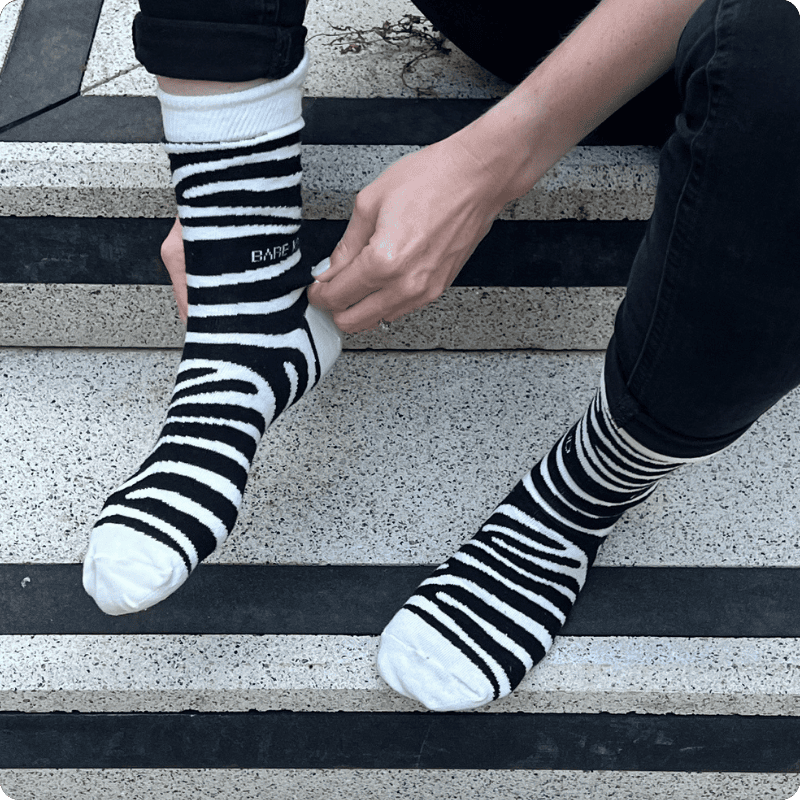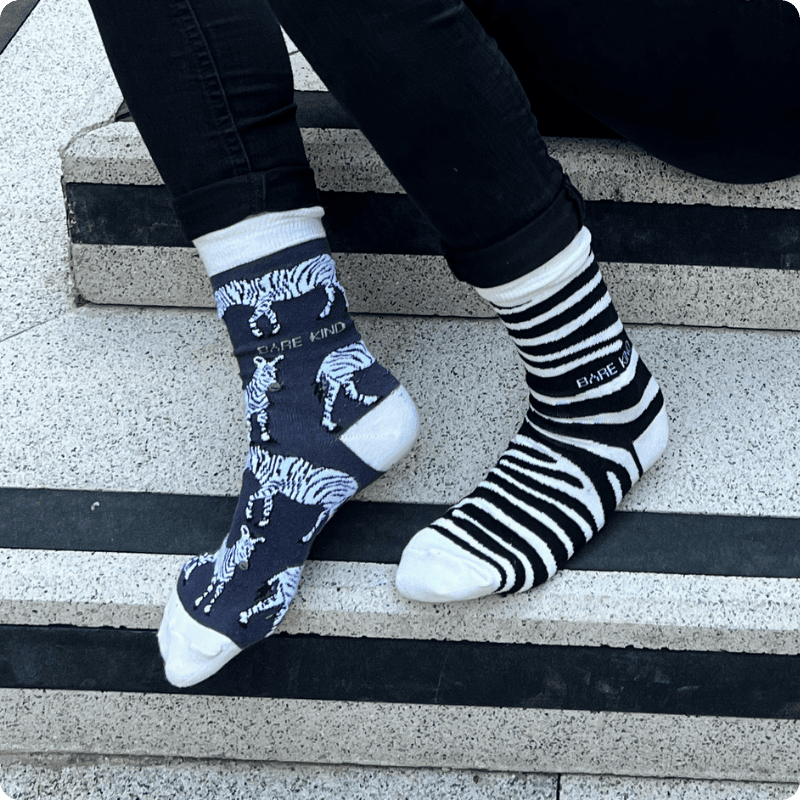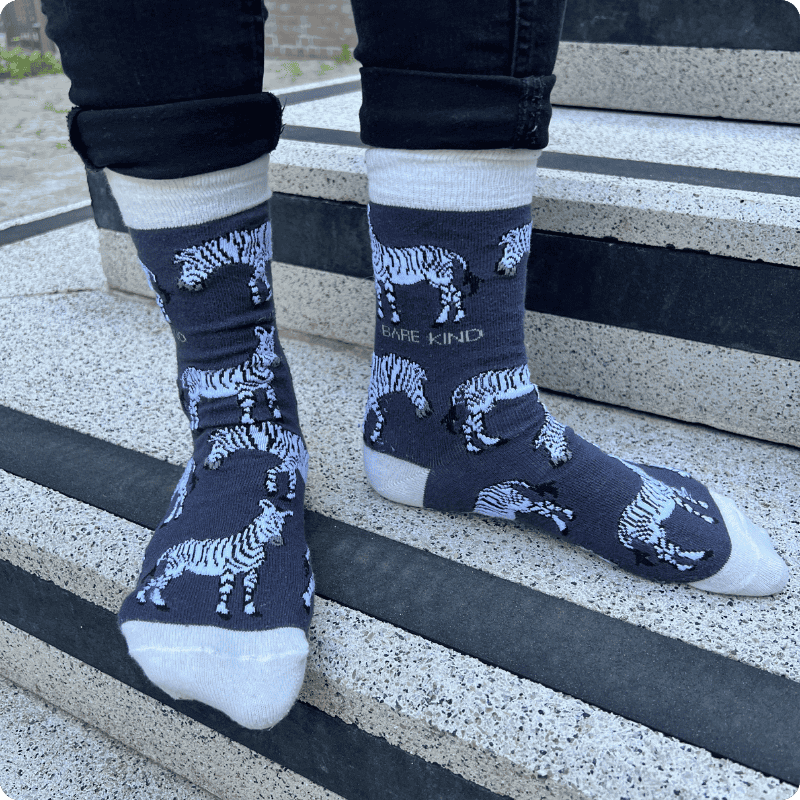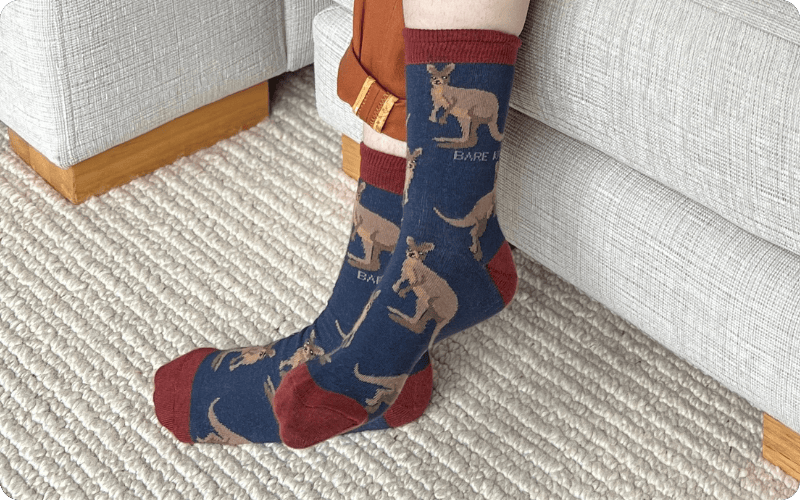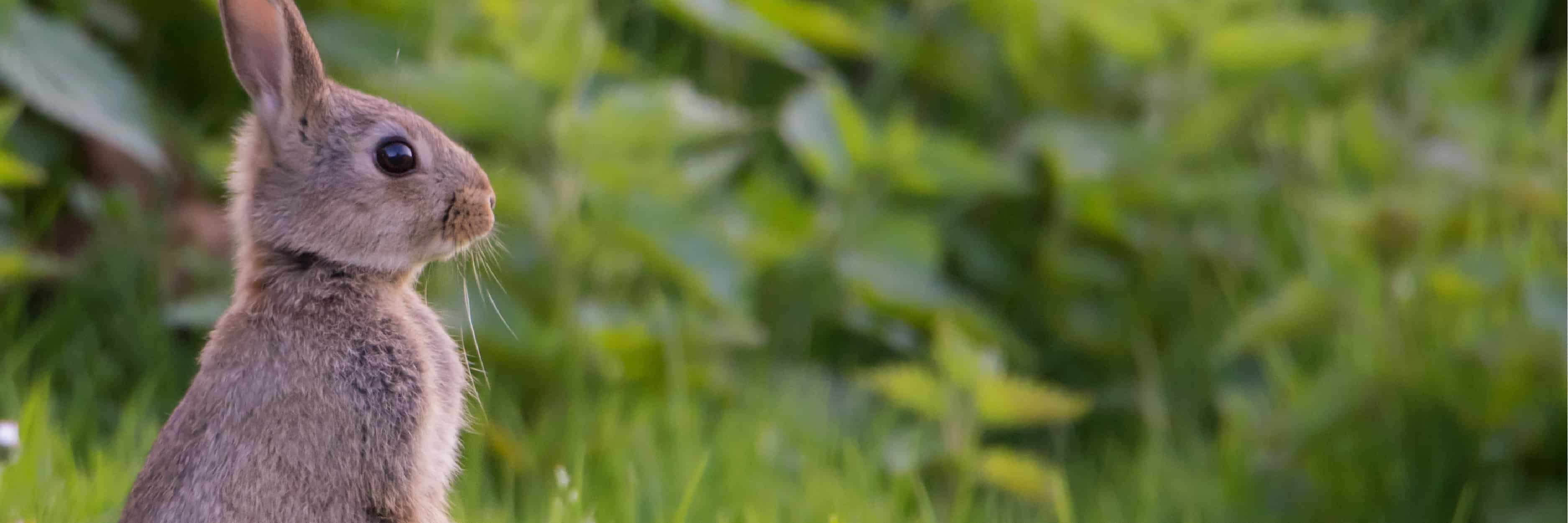
Animals We Have Helped in the Past
Harvest Mouse & Stork
These socks supported Citizen Zoo by contributing to train and equip their citizen scientists.
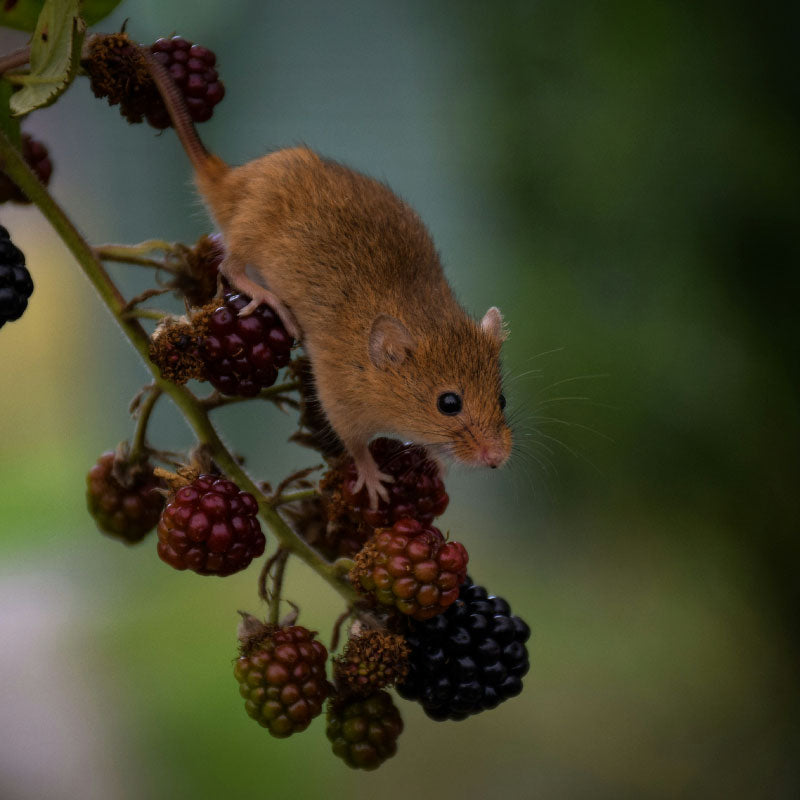
The UK harvest mouse is Britain’s smaller rodent, weighing only around 4-6g, about the weight of a pencil.
They have golden brown fur and long tail which is about the same size as its body at round 5-7cm. Their tail is prehensile which means it is capable of grasping and they use it to climb.
Harvest mice are very good climbers, and they make spherical nests from grass above the ground, usually in tall grasses and hedgerows.
The harvest mouse is classified differently across the UK, being of least concern
in England but vulnerable in Wales and critically endangered in Scotland.
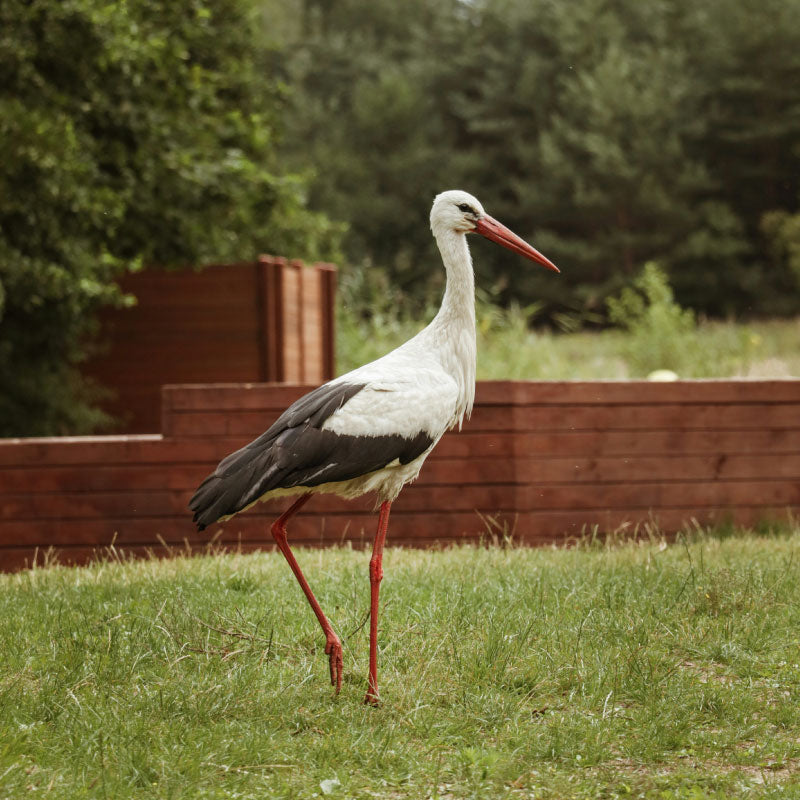
The stork is an iconic, large bird, well-known for its gorgeous white plumage, black wing feathers and long red legs and bill.
Storks used to be native to the UK but went extinct in the 15th century due to hunting and habitat loss.
There have been successful projects to reintroduce storks to the UK which ledto the first breeding pair in over 600 years.
As well as focusing on reintroduction of the animal, conservation efforts are focusing on the other significant threats that impact storks such as habitat loss, degradation and the impact of human development like power lines.
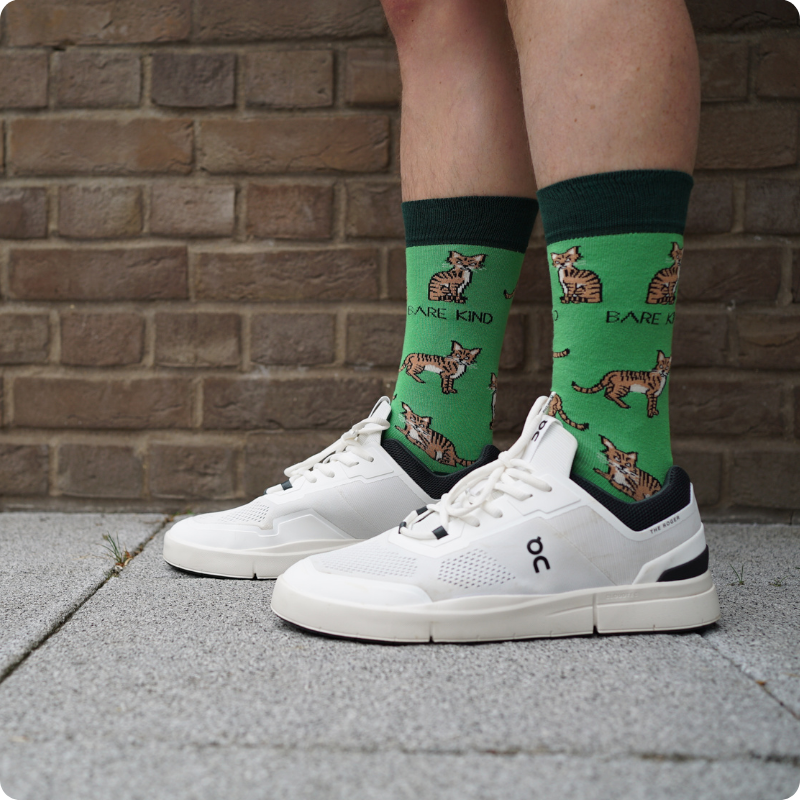
Highland Wildcat
Helped to fund the Scottish Wildlife Trust's fencing projects which protects tree samplings from deer, protecting the Scottish wildcat’s habitat.
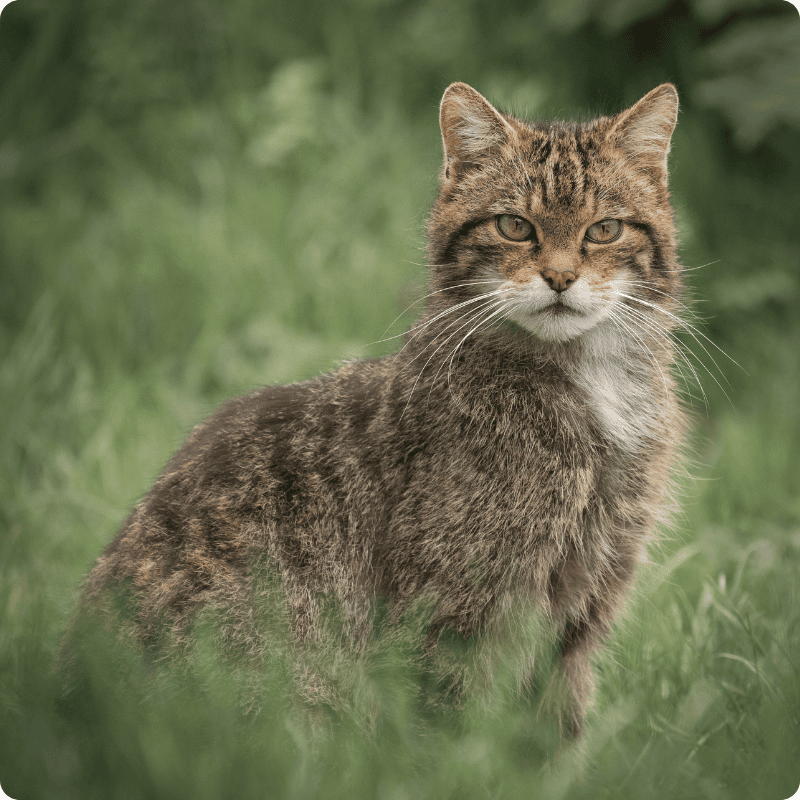
Highland wildcats are often called the Scottish Tiger because of their fierce demeanour and striking striped coat. They’ve roamed Scotland for over 2 million years, making them one of the UK’s oldest native species. At first glance, they look like large domestic tabbies. However, Highland wildcats are sturdier, with thicker tails, bold black stripes, and no white markings. They are also untamable, meaning that it’s not a good idea to try to keep them at home. Highland wildcats are mostly nocturnal, thriving in Scotland’s rugged, forested landscapes after dark.
Zebra
Helped with zebra tracking & capture with the African Parks Team.
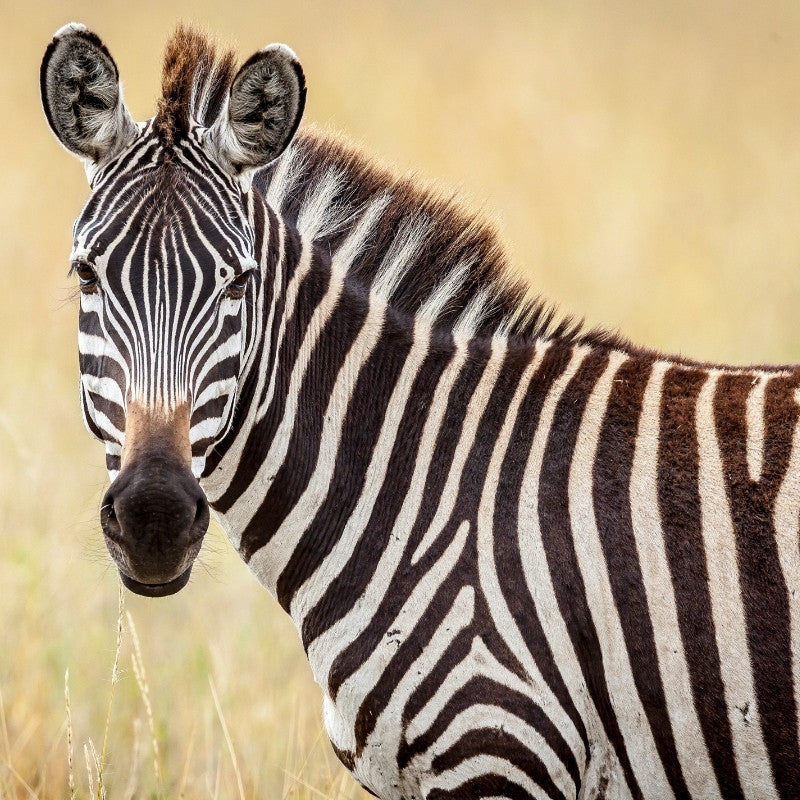
Zebras are strikingly beautiful animals known for their black-and-white striped coats. They are native to Africa and are often spotted in savannas, grasslands, and woodlands. Zebras are herbivores and, like hippos, are social animals, often found in herds. Their distinct stripes serve as both camouflage and a means of group identification.
Zebras, although not currently classified as endangered, are threatened by habitat loss and the illegal wildlife trade.
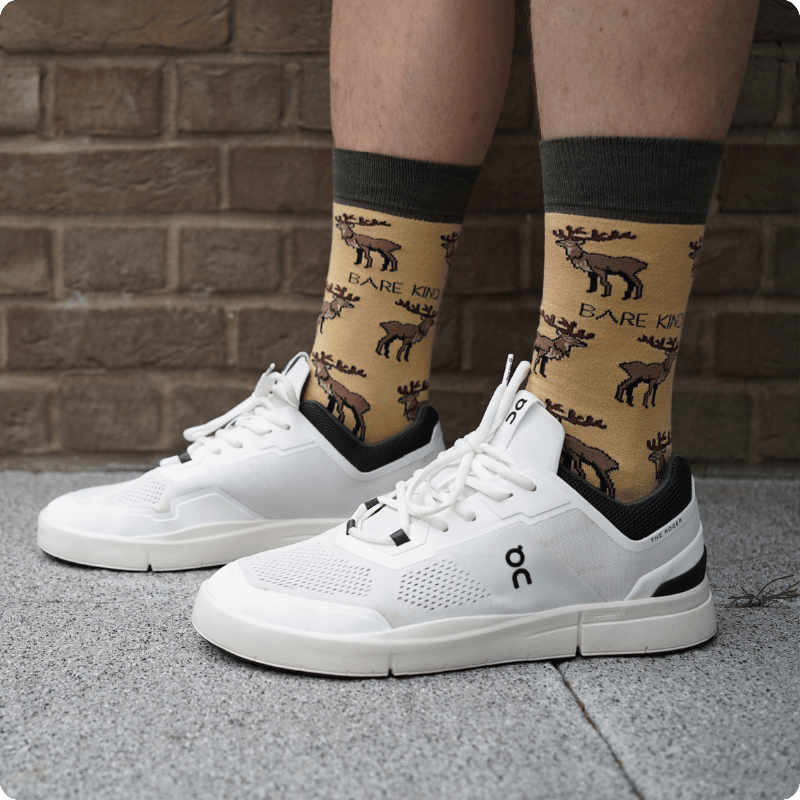
Highland Deer
Covered the rescue of an injured deer with the New Arc Wildlife Centre.
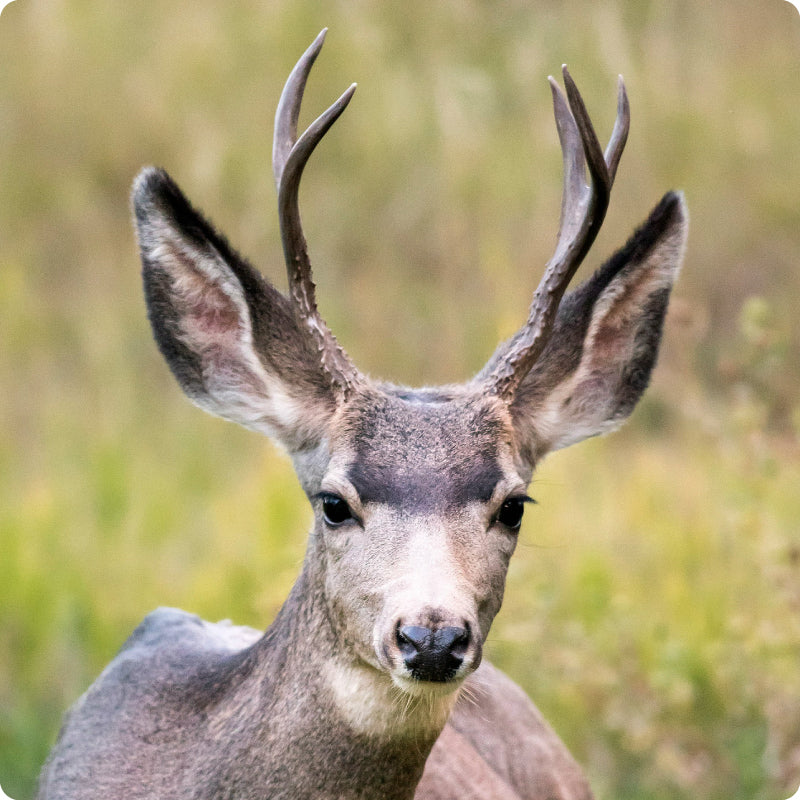
Red deer are the largest mammals in the UK. Male red deer, or stags, can keep growing until they weigh up to 240 kg. At this point, they can stand about 1.2 meters tall at the shoulder. They also grow impressive antlers that can span over a meter wide. Their antlers are made of bone and therefore cannot be classified as horns. They shed every year and regrow, getting larger each year. This is another reason they’re not horns because horns are permanent.

Highland Dog
In 2024 these socks contributed to the care of the cats & dogs at Battersea Dogs & Cats Home.
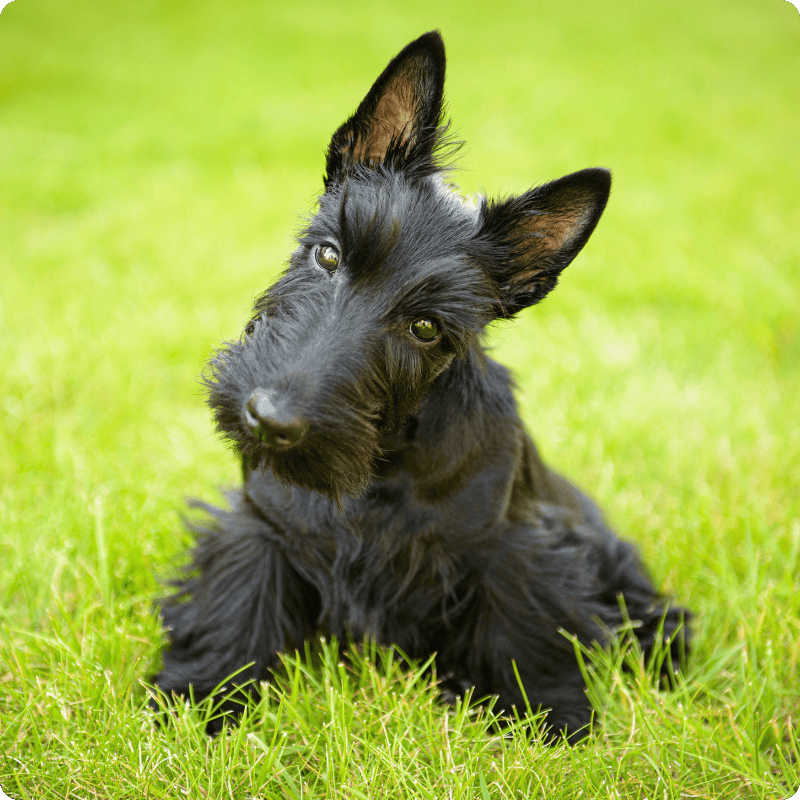
Fondly known as Scotties, these Scottish terriers are one of the most iconic and beloved breeds in history. Just like the Scotts, they have a distinctive beard, bushy eyebrows, and an unmistakable air of dignity. They have two coats to be able to withstand the harsh Scottish weather; a short wiry coat on the outside and a soft, dense undercoat. Scotties are some of the most loyal dogs out there. They are spirited, energetic, strong-willed and affectionate to humans.

Toucan
As part of our Rainforest Range, our toucan socks helped protect 2,940 acres of tropical habitat across 5 years with the Rainforest Trust UK.
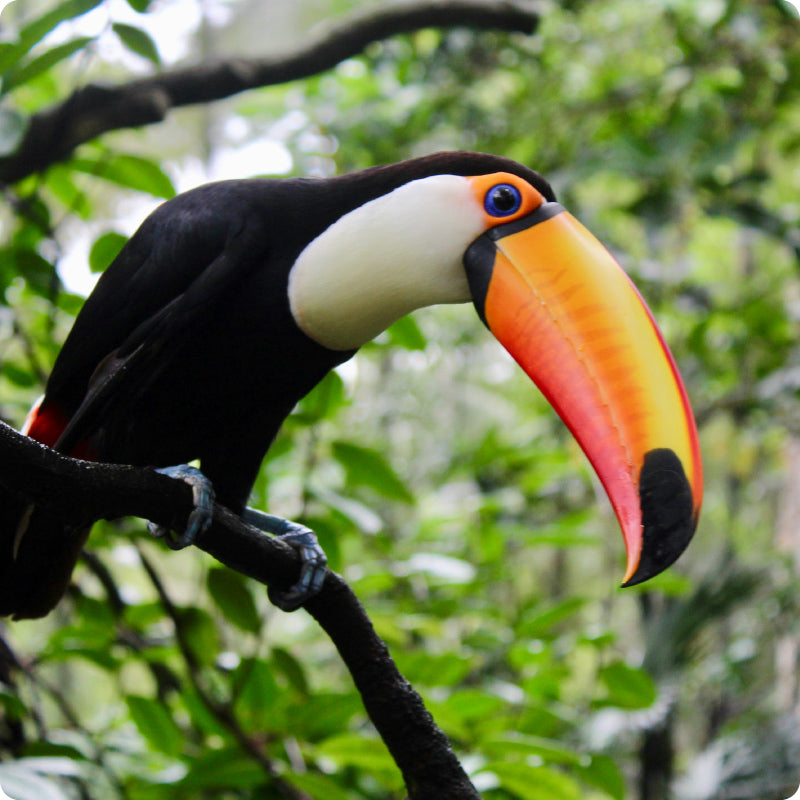
Picture this, a bird with a comically oversized, rainbow-coloured nose that looks like it was borrowed from a cereal mascot. That's a toucan for you! Turns out, that giant beak is basically a super lightweight fruit-grabbing tool. They're the rainforest's social butterflies, squawking and clicking their beaks like they're having the best gossip session. And bedtime? Forget cozy nests; they're all about stuffing their long tails and huge beaks into tiny tree holes, turning themselves into adorable, feathered burritos."Beyond their striking appearance, they play a crucial ecological role as seed dispersers. By consuming fruit and then regurgitating or excreting the seeds, they contribute to the regeneration and diversity of forest plant life. This process is essential for maintaining healthy rainforest ecosystems. should care about toucans because they are indicators of rainforest health, and rainforests themselves are vital for global climate regulation. Furthermore, their beauty and unique characteristics add to the planet's biodiversity, and losing them would diminish the natural world. Habitat loss due to deforestation is a major threat to toucan populations, so conservation efforts are essential to protect these remarkable birds and the ecosystems they inhabit.
Wallaby & Gouldian Finch
As part of our Australian Range these socks have be able to donate 78 microchips to monitor released animals with the Australian Wildlife Conservancy
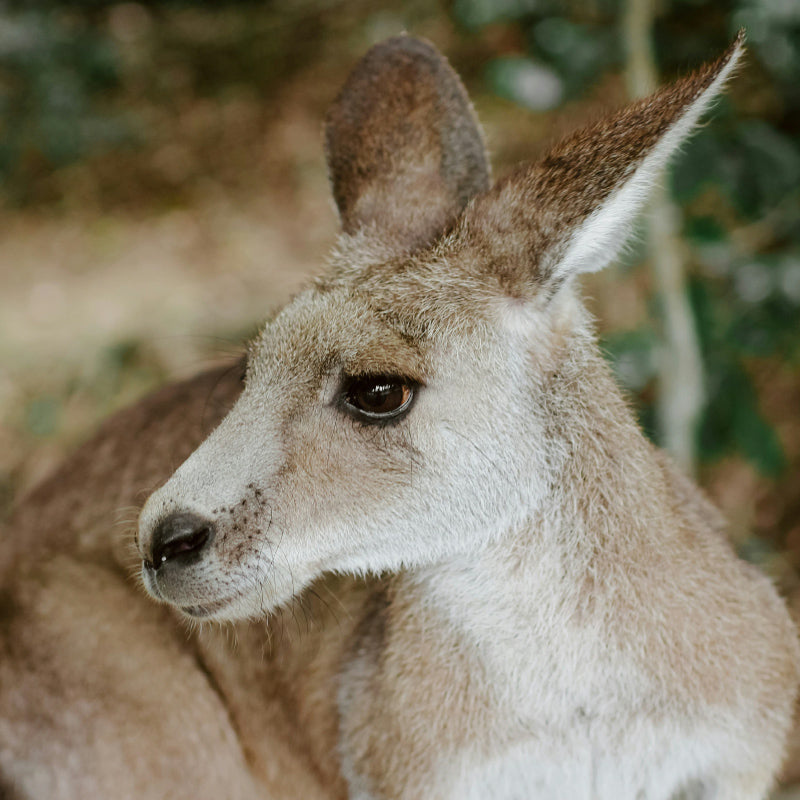
Wallabies
Wallabies are fascinating and often overlooked members of the marsupial family. While they may resemble smaller kangaroos, these agile creatures have unique adaptations that make them an essential part of their ecosystems. With powerful hind legs, wallabies can leap up to 10 feet in a single bound. They are basically, the long-jump champions of the Outback. And get this: their tails act like a built-in kickstand, helping them balance as they bounce around. But wallabies aren’t just cute, bouncy fluff-balls; they play a crucial role in their ecosystems. Their diet of grasses and plants helps with seed dispersal, contributing to healthy vegetation growth and biodiversity. They even aerating soil as they dig around for food.
Beyond their ecological role, wallabies are a vital part of Australia’s natural heritage. Sadly, habitat destruction and predators are putting some species at risk. Protecting wallabies means preserving the delicate balance of their ecosystems and ensuring future generations can appreciate these remarkable animals. We've supported wallaby conservation in the past by donating to Australian Wildlife Conservancy , helping protect their habitats and boost their population.
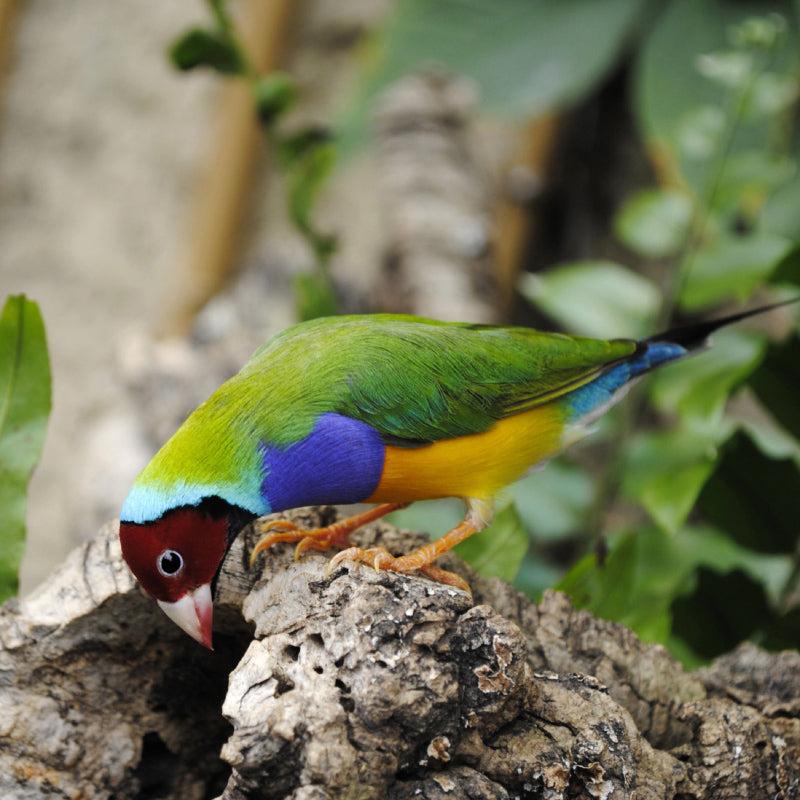
Gouldian Finch
Gouldian finches, platypuses, wallabies, and numbats are all important and unique Australian species that are at risk due to various factors. The Gouldian finch, also known as the rainbow finch, has experienced a population decline of around 80% in the past few decades, and is listed as endangered. Habitat destruction, disease, and predation by introduced species are among the main threats to their survival.
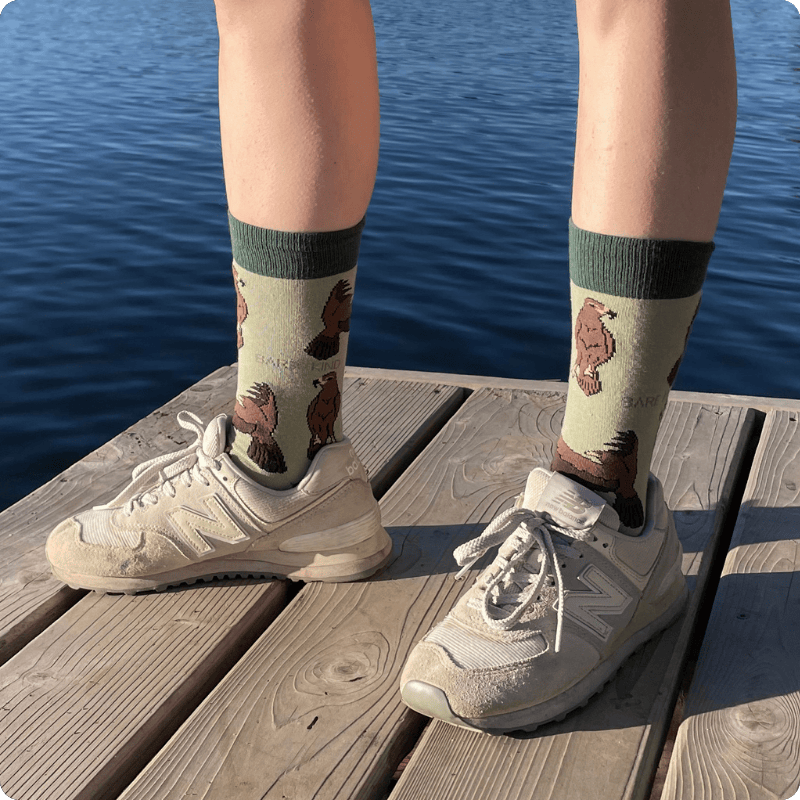
Eagle
Since 2023 these socks supported the Busch Wildlife Sanctuary by contributing towards medicine, food & care.
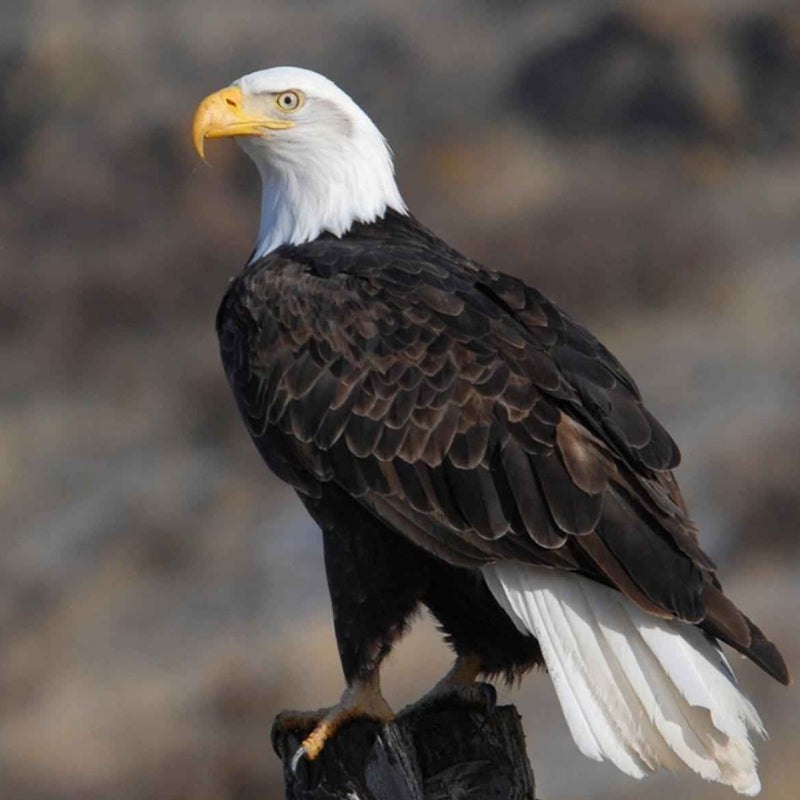
North America boasts several eagle species, but two reign supreme: the iconic bald eagle and the fierce golden eagle. Both soar across diverse landscapes, from Alaska's tundra to Florida's sun-drenched swamps.Florida holds a special place for eagles, especially bald eagles.
Eagles were once ravaged to near-extinction by DDT (Dichlorodiphenyltrichloroethane, a chemical compound with a "complex" history) and habitat loss.
Thanks to the banning of DDT in 1972, the Bald and Golden Eagle Protection Act, and dedicated conservation efforts, the bald eagle made a remarkable recovery. It was successfully removed from the endangered species list in 2007. Over 1,400 pairs now nest in the state. However, lead poisoning from fish and habitat loss due to coastal development still pose threats.
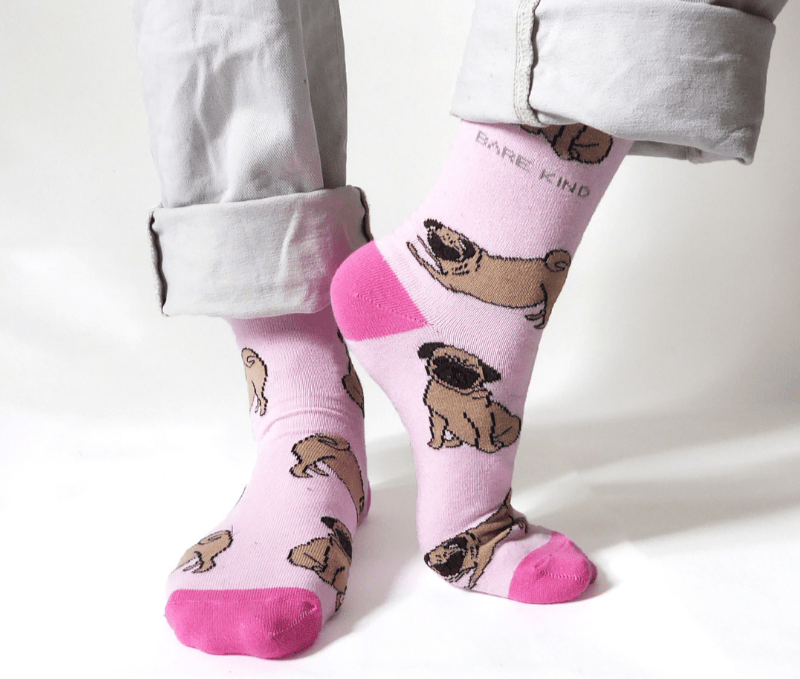
Pug
Funded for 5 dogs to be vaccinated in 2021 with Paws2Rescue.

The pug is a beloved, small breed of dog, instantly recognisable by its wrinkled face, curly tail, and expressive, wide-set eyes. Known for their affectionate nature and quirky personalities, pugs have been cherished companions for centuries.
Despite their popularity, pugs face several health challenges, particularly due to their flat faces, which can cause breathing difficulties and other issues. Animal welfare groups and breeders are increasingly working to improve the health and well-being of pugs by encouraging responsible breeding practices and raising awareness about their specific needs.
While pugs may not face extinction like some wild species, the focus on their welfare reminds us that conservation and care apply just as much to our companion animals as they do to wildlife.

Rabbit
In 2021 these socks funded hay, fresh veg, toys & pelts for a rabbit for the whole year with One Bun At a Time.
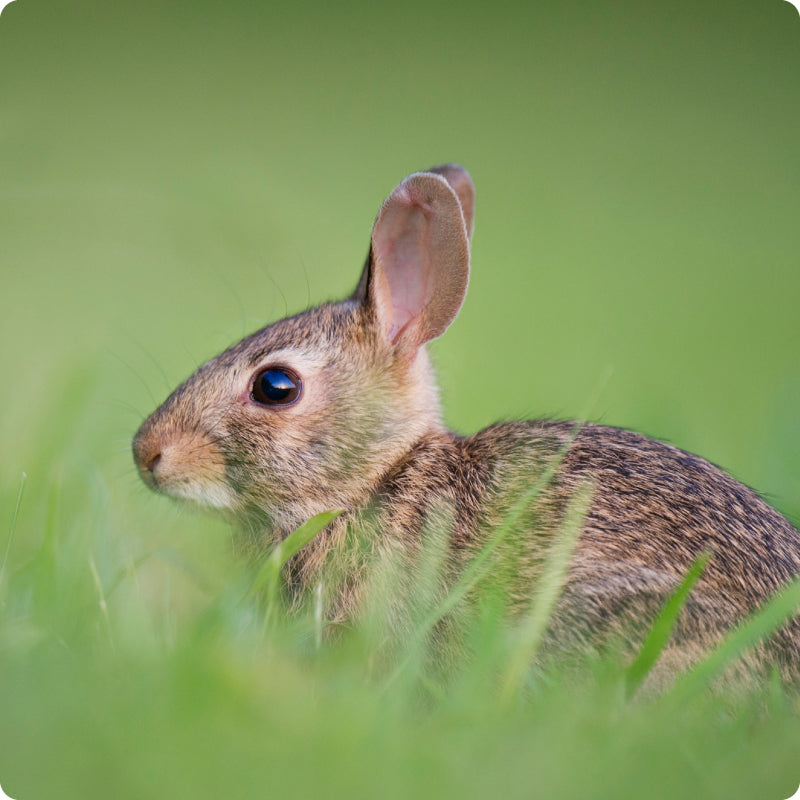
The rabbit is a charming, small mammal best known for its long ears, twitching nose, and powerful hind legs, often seen bounding across meadows and fields.
Though rabbits are still widespread in the UK today, their populations have faced serious declines in recent decades due to disease, habitat loss, and changes in agricultural practices.
Conservation efforts are now focusing on restoring wild habitats, promoting nature-friendly farming, and monitoring the impact of diseases like myxomatosis and rabbit haemorrhagic disease. Alongside these, there's increasing awareness of the role rabbits play in the ecosystem, both as grazers and as a vital food source for predators like foxes and birds of prey.




